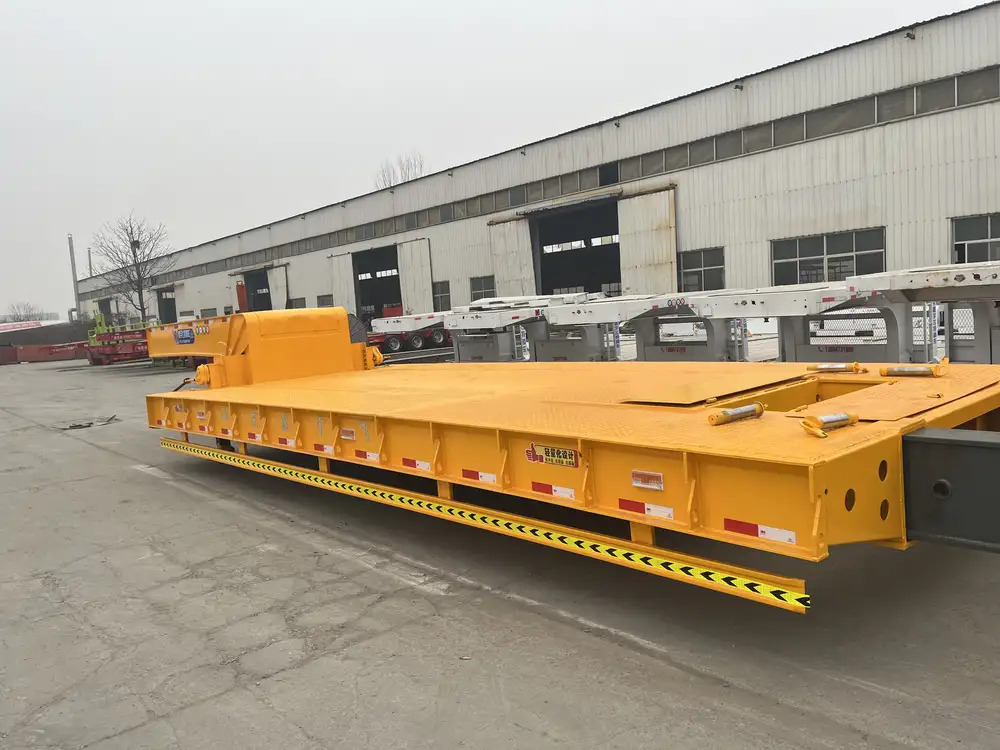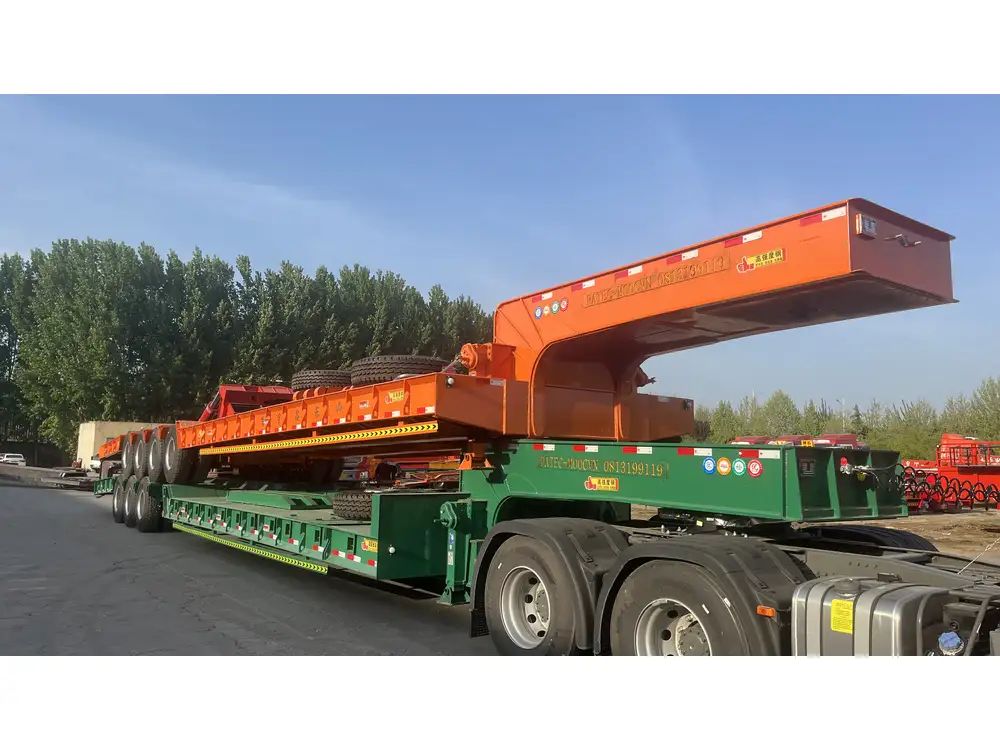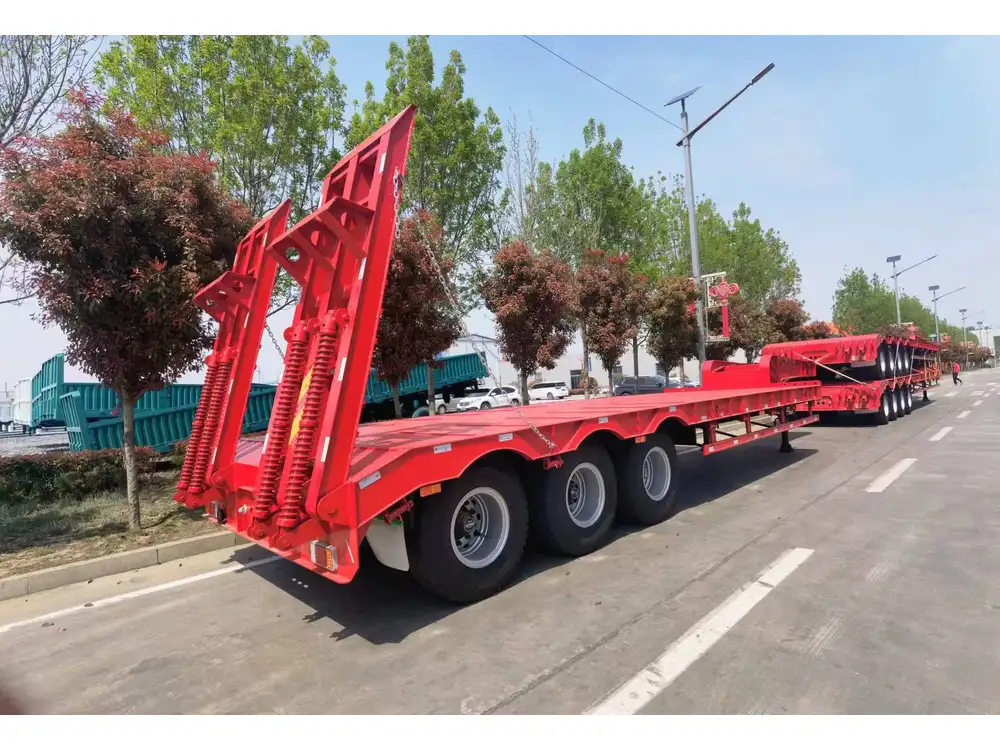What is a TTT Tank Trailer?
The term “TTT tank trailer” refers to a specific type of trailer designed for the transportation of various liquids, including fuel, chemicals, and food-grade products. The acronym TTT stands for “Tank Trailer Transport,” which highlights its primary function: facilitating the safe and efficient transport of liquid materials. These trailers are engineered with sophisticated technology, optimal structural integrity, and safety features to ensure they can handle the demands of transporting hazardous or non-hazardous liquids.
Types of TTT Tank Trailers
Finding the right tank trailer is essential for meeting transportation needs and ensuring regulatory compliance. Below, we break down the various types of TTT tank trailers:
| Type | Description | Common Uses |
|---|---|---|
| DOT Specification Tank | Complies with Department of Transportation regulations to transport hazardous materials. | Fuel transport, chemicals |
| Food-Grade Tank Trailer | Designed with materials that prevent contamination, ensuring products are safe for human consumption. | Dairy, juices, and other consumables |
| Chemical Tank Trailer | Engineered to carry corrosive or hazardous chemicals, often constructed with specialized coatings and materials. | Industrial chemicals |
| Multi-Compartment Tank | Allows the transport of different liquids simultaneously without cross-contamination. | Various liquid products |
| Portable Tank Trailer | Allows for the transport of waste or non-hazardous liquids in a compact format, generally used in less-demanding scenarios. | Waste management and recovery |

Key Features of TTT Tank Trailers
When selecting a TTT tank trailer, understanding its features is critical for both operational efficiency and safety. Here’s a closer look at the prominent attributes that define these trailers:
1. Robust Construction
TTT tank trailers are built to withstand extreme conditions. They are typically constructed from high-grade materials such as aluminum or stainless steel. These materials ensure:
- Durability: Resistance to wear and corrosion.
- Weight Efficiency: Reduced weight for better fuel efficiency without sacrificing strength.
2. Advanced Safety Mechanisms
Safety is paramount in the transport of liquids. TTT tank trailers come equipped with a variety of safety features, including:
- Pressure Relief Valves: Prevent buildup of pressure within the tank.
- Emergency Shut-Off Valves: Allow for quick containment of hazardous materials in emergencies.
- Anti-Surge Baffles: Reduce the movement of liquids, providing stability on the road.

3. Versatile Tank Configurations
Depending on the nature of the liquid being transported, tank trailers can be customized in terms of:
- Size: Common capacities range from 1,000 to 6,000 gallons.
- Shape: Typically cylindrical; some may have specialized shapes tailored for specific liquids.
- Compartmentalization: Multi-compartment options allow for different liquids to be transported separately.
4. Compliance and Certification
Compliance with local, state, and federal regulations is crucial when operating TTT tank trailers. Most come with certifications that ensure they meet:
- DOT Standards: Essential for transporting hazardous materials.
- FDA Guidelines: Necessary for food-grade products.
TTT Tank Trailer Applications
Understanding the applications of TTT tank trailers can illuminate their significance in various industries. Below are common use cases:

Fuel Transportation
Transporting fuels requires precision and safety due to the hazardous nature of these liquids. TTT tank trailers used in this sector are designed with:
- Anti-static materials to prevent ignition.
- Specific insulation to maintain temperatures for certain fuel types.
Chemical Transportation
The chemical industry relies heavily on TTT tank trailers for transporting liquids that can be corrosive or volatile. These trailers are designed with features such as:
- Specialized coatings to prevent chemical interactions.
- Reinforced structures to withstand high pressures.
Food and Beverage Transport
The food industry demands the highest level of cleanliness. Food-grade TTT tank trailers are constructed to:
- Prevent contamination through smooth, non-porous surfaces.
- Maintain temperature control for perishables through insulated tanks.

Choosing the Right TTT Tank Trailer
Selecting the appropriate TTT tank trailer involves several considerations. Here’s a structured approach to making an informed decision:
1. Identify Your Needs
Begin by assessing the types of liquids you intend to transport. Some key questions to consider include:
- Is the liquid hazardous or non-hazardous?
- What is the viscosity and density of the liquid?
- Are there specific regulatory requirements for the transport?
2. Evaluate Regulatory Compliance
Choose a tank trailer that complies with:
- Local and federal transportation laws.
- Safety and handling guidelines relevant to the material being transported.

3. Consider Trailer Design and Features
Investigate the structural and safety features that a tank trailer offers:
- Look for trailers with advanced safety features.
- Assess the construction materials and insulation options based on your liquid needs.
4. Analyze Cost versus Functionality
TTT tank trailers can range widely in price. Weighing the cost against the functionality and efficiency provided is essential. Factors to consider include:
- Initial purchase price versus long-term maintenance costs.
- Fuel efficiency based on the trailer design and weight.
Maintenance of TTT Tank Trailers
Proper maintenance is vital for prolonging the life of a TTT tank trailer and ensuring safety. Below are maintenance tips to consider:
| Maintenance Task | Frequency | Purpose |
|---|---|---|
| Visual Inspections | Daily | Check for leaks, dents, or rust. |
| Tank Cleaning | After Each Load | Prevent contamination, especially for food-grade trailers. |
| Brake and Tire Checks | Monthly | Ensure functionality and safety on the road. |
| Fluid Level Monitoring | Regularly | Prevent overfilling and assess fluid integrity. |

Inspection Checklist
To simplify inspections, you can implement a structured checklist:
- Exterior Condition: Check for signs of wear, tear, and damage.
- Valves and Hoses: Ensure they are functioning properly without leaks.
- Safety Equipment: Verify that emergency shutdowns and safety measures are operational.
- Documentation: Keep certifications and inspection records updated.
Common Challenges in TTT Tank Trailer Use
While TTT tank trailers are highly effective, users often face challenges that necessitate proactive management:
1. Regulatory Compliance
Navigating the intricate regulations surrounding the transport of liquids can be overwhelming. Regularly reviewing compliance is critical to avoid penalties and ensure safety.

2. Liquid Management
Managing the types of liquids in multi-compartment trailers can lead to confusion if not monitored closely. Consider implementing robust tracking systems to ensure segregation of contents.
3. Maintenance Costs
Unexpected repairs can arise due to wear and tear. Developing a strong preventive maintenance plan will help manage these costs and improve efficiency.
4. Fuel Efficiency
The weight of the tank trailer can significantly impact fuel consumption. Maximizing load efficiency and choosing lightweight materials can help mitigate this challenge.

Conclusion
TTT tank trailers serve as an indispensable component in the transportation of liquids across various industries. Understanding their design, functionality, and maintenance can significantly enhance operational safety and efficiency. By carefully selecting the right trailer tailored to specific needs, adhering to regulations, and implementing a robust maintenance strategy, manufacturers and operators can optimize their logistics and transportation efforts. Whether you are transporting fuel, chemicals, or food products, investing in a high-quality TTT tank trailer will ensure your operations remain safe, compliant, and efficient.



